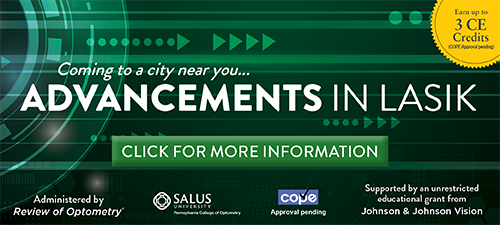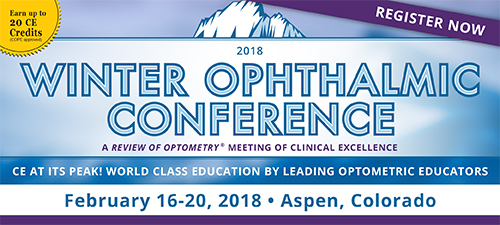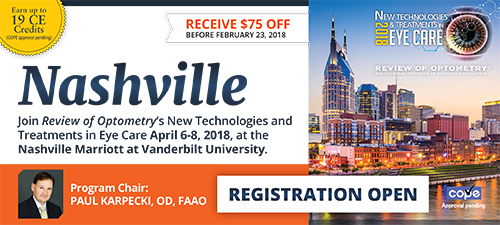
A
weekly e-journal by Art Epstein, OD, FAAO
Off the Cuff: For the Love of Money
How times have changed. It’s impossible to read the news today without questioning the very foundations of society. While the world seems to spin wildly out of control, traditional values and respect for one another become increasingly irrelevant. In health care, once sacrosanct, the influence of insurance companies and now equity capital have made truth relative and patient well-being unimportant.
|
|||||
|
|||
| Neuropathic-like Ocular Pain and Nonocular Comorbidities Correlate with Dry Eye Symptoms | ||||
This study evaluated the association between dry eye (DE) symptoms and neuropathic-like ocular pain (NOP) features, chronic pain conditions, depression and anxiety in patients presenting for routine ophthalmic examinations. A total of 233 consecutive patients ≥18 years of age presenting to a comprehensive eye clinic between January and August 2016 were included in this study. Information on demographics, chronic pain conditions, medication use, DE symptoms (dry eye questionnaire, DEQ5), NOP complaints (burning; and wind, light and temperature sensitivity), and depression and anxiety indices (patient health questionnaire 9, PHQ-9 and symptom checklist 90-revised, SCL-90-R) were collected for each individual.
The mean age of the population was 46.3 years (±13.0), and 67.8% (n=158) were female. Per the DEQ5, 40.3% (n=94) had mild or greater DE symptoms and 12% (n=24) had severe symptoms. Severity of DE symptoms correlated with NOP complaints: burning (Pearson r=0.37, p<0.001); and sensitivity to wind (r=0.37, p<0.001), light (r=0.34, p<0.001) and temperature (r=0.30, p<0.001). Sex, race and ethnicity were not significant risk factors for DE symptoms. Risk factors for mild or greater DE symptoms included a greater number of chronic nonocular pain conditions (odds ratio [OR]=1.38, p<0.001), arthritic pain (OR=6.34, p<0.001), back pain (OR=2.47, p=0.004), headaches (OR=2.14, p=0.02), depression (OR=1.17, p<0.001) and anxiety (OR=1.13, p=0.02). Dry eye severity positively associated with NOP complaints, comorbid chronic pain conditions, and symptoms of depression and anxiety. |
||||
SOURCE: Chang VS, Rose TP, Karp CL, et al. Neuropathic-like ocular pain and nonocular comorbidities correlate with dry eye symptoms. Eye Contact Lens. 2017; Dec 7. [Epub ahead of print]. |
||||
|
|||
Effects of the Rigid Gas Permeable Contact Lens Use on Tear and Ocular Surface Among Keratoconus Patients |
||||
This study investigated changes in tear and ocular surface of patients with keratoconus using rigid gas permeable contact lenses (RGPCL) and compared them against keratoconus patients who were not using lenses, as well as a control group of healthy subjects. A total of 24 keratoconus patients using RGPCL (group 1), 22 patients who were not using lenses (group 2) and 21 healthy subjects (group 3) were included in the study. Subjective complaints about the subjects' eyes have been investigated using the ocular-surface disease index (OSDI). After the control of best-corrected visual acuity, anterior chamber and fundus examinations were performed.
Schirmer’s and tear break-up mean comparison tests revealed significant differences across different groups, but tear osmolarity analysis did not. Oxford and OSDI scores were compatible with Schirmer’s and tear break-up test comparisons. Moreover, no statistical differences were seen in impression cytology measures between groups. Researchers found that the erosion in the tear film stability was in line with the erosion in the ocular surface epithelium. They concluded that, taking into account the statistical indifference between the impression cytology measures across groups, the break-up time differences might be attributed to the collagen destruction in tear. |
||||
SOURCE: Yuksel Elgin C, Iskeleli G, Aydin O. Effects of the rigid gas permeable contact lense use on tear and ocular surface among keratoconus patients. Cont Lens Anterior Eye. 2017; Dec 6. [Epub ahead of print]. |
||||
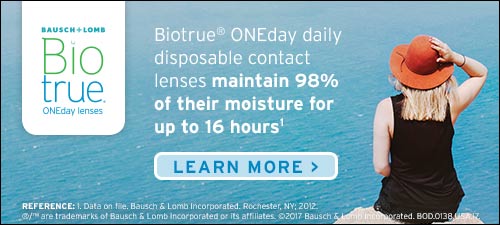
|
||
| Corneal, Conjunctival Effects and Blood Flow Changes Related to Silicone Hydrogel Lens Wear and Their Correlations with End of Day Comfort | ||||
This study examined how wearing high and low modulus lenses with two different base curves affected lens fit, and the corneal tissue and bulbar conjunctival vascular tissue (bulbar redness and blood velocity). Additionally, this study quantified the associations between these baseline and outcome variables, and attempted to correlate these variables with end of day comfort. Thirty participants wore higher (PureVision [PV] 8.3, 8.6) and lower (Acuvue Advance [AA] 8.3, 8.7) modulus silicone hydrogel lenses for two weeks on a daily-wear basis. Lens fitting characteristics were examined. Corneal epithelial thickness was measured, and the cornea and conjunctiva were assessed. Red blood cell (RBC) velocity was estimated from high magnification bulbar conjunctival images. Subjective comfort/dryness was reported by participants using visual analogue scales.
AA lenses were rated the most comfortable. The least movement was while using the AA 8.3 base curve lens. Steep AA and PV lenses showed significantly higher conjunctival staining at the two-week visit. There was a significant decrease in RBC velocity with both steeper AA lenses and PV lenses. Comparing baseline and two-week visits, there was a significant negative correlation for the PV 8.3 between comfort and superior bulbar staining. For both the PV 8.3 and AA 8.3, reduced RBC velocity was correlated with dryness. Investigators wrote that physical differences in contact lenses affected the structural and vascular functional aspects of the ocular surface, and these factors might be associated with symptoms of dryness. |
||||
SOURCE: Sorbara L, Maram J, Simpson T, et al. Corneal, conjunctival effects and blood flow changes related to silicone hydrogel lens wear and their correlations with end of day comfort. Cont Lens Anterior Eye. 2017; Dec 7. [Epub ahead of print]. |
||||
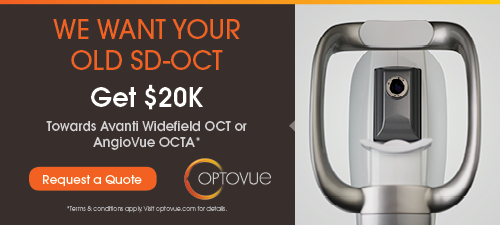 |
||
| News & Notes | ||||||||
| Academy Announces Research Academy The American Academy of Optometry announced a new program, The Research Academy, to be held in Columbus, Ohio, July 17 to 19, 2018. The goal of the program is to help optometry faculty attendees develop ideas that will result in extramural funding for basic and patient-oriented research in optometry and vision science. Ideas and research approaches will be critically evaluated by experienced researchers with a history of extramural funding and by National Eye Institute staff members. A mock National Institutes of Health-style study section will be held so attendees can experience how grants are reviewed. The program will include an overview of the National Eye Institute and federal changes to regulations that govern biomedical research. The application window will be open from Dec. 18, to Jan. 16, 2018. Early applications are encouraged, as admissions are on a rolling basis. Read more. |
||||||||
Distributors of Rohto Dry-Aid Offer New Educational Resource
|
||||||||
| Ennco Display Group Offers Holiday Savings Ennco Display Group is offering 20% off its most popular locking frame rods. The Mino and the Alumina, which help optical shops to avoid increasingly common eyewear theft, will be offered at the discounted rate until Dec. 21. Ennco is making the special promotion pricing available on all sizes of the Mino and Alumina locking rods. Visit the website.
|
||||||||
|
||||||||
|
||||||||
|
||||||||
|
||||||||
|
Optometric Physician™ (OP) newsletter is owned and published by Dr. Arthur Epstein. It is distributed by the Review Group, a Division of Jobson Medical Information LLC (JMI), 11 Campus Boulevard, Newtown Square, PA 19073. HOW TO ADVERTISE |




